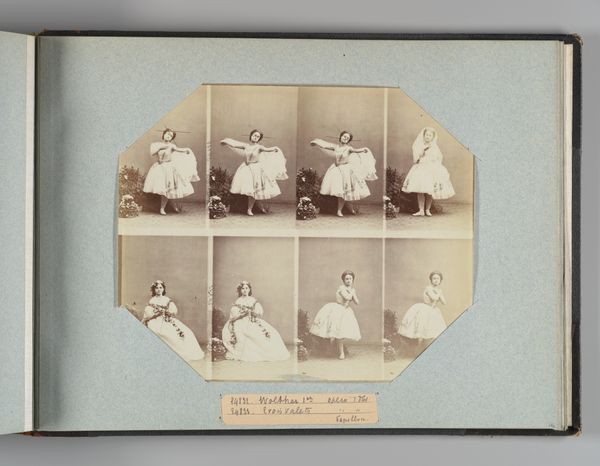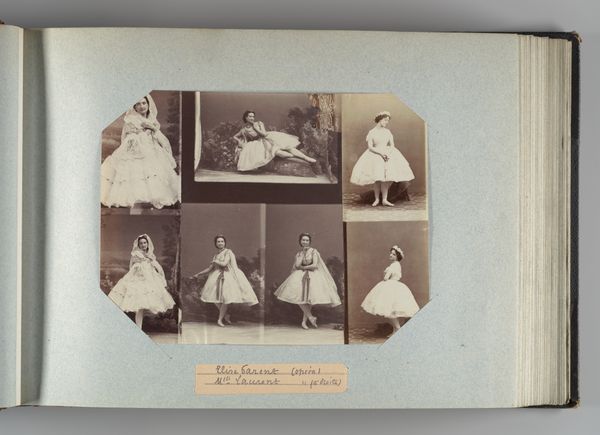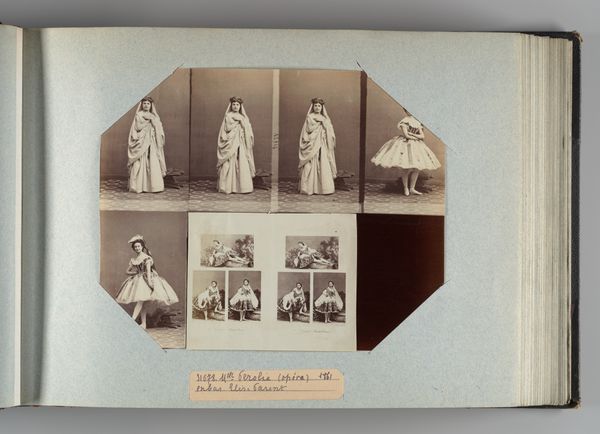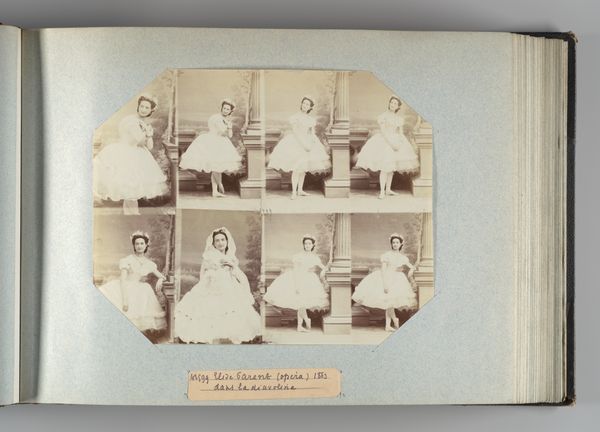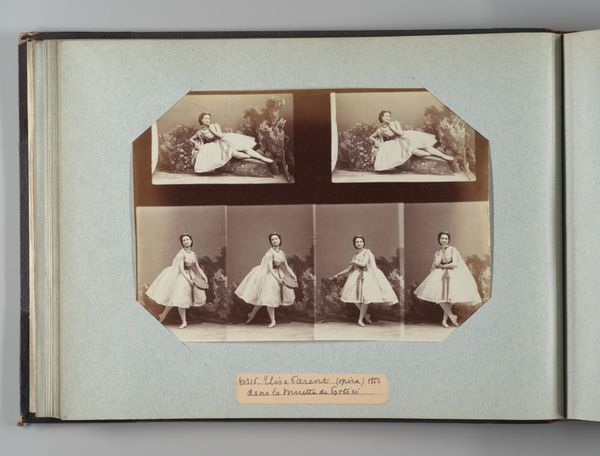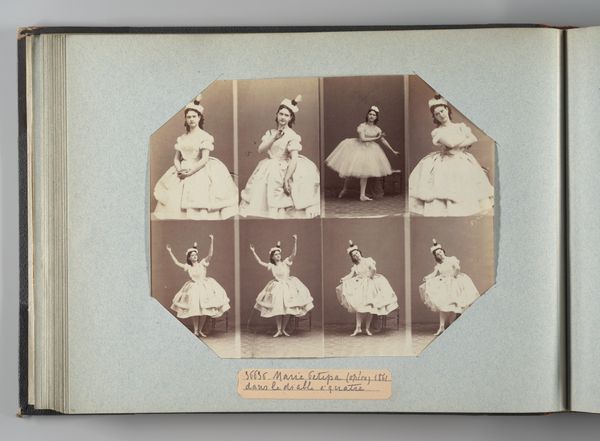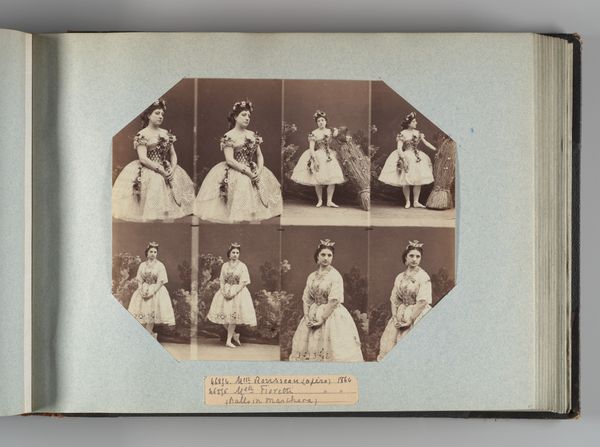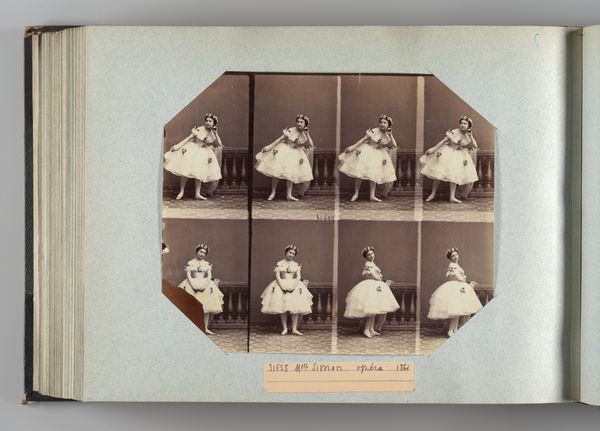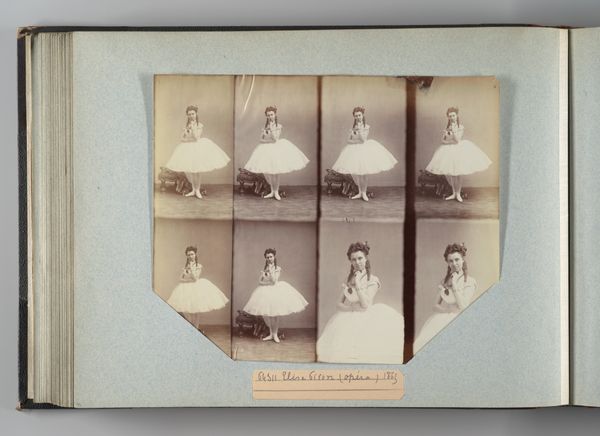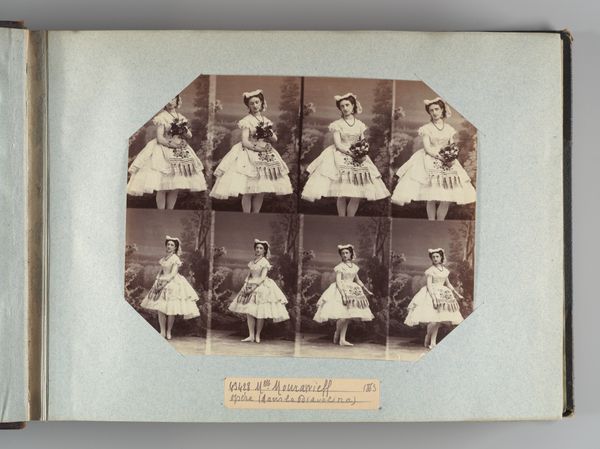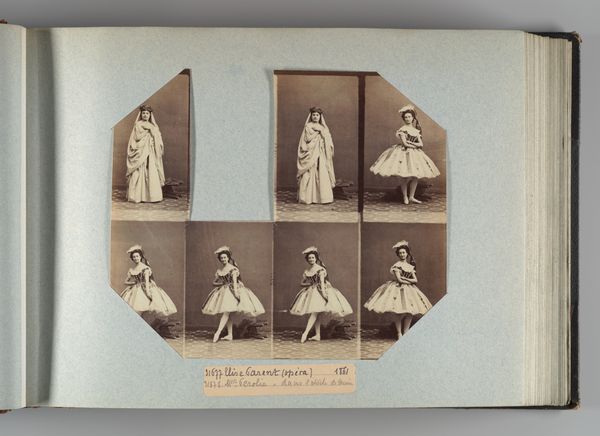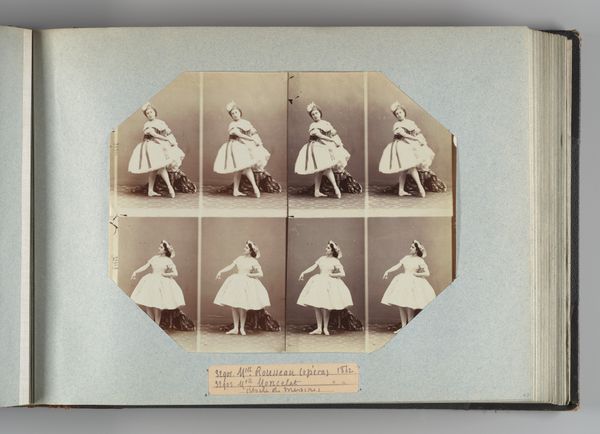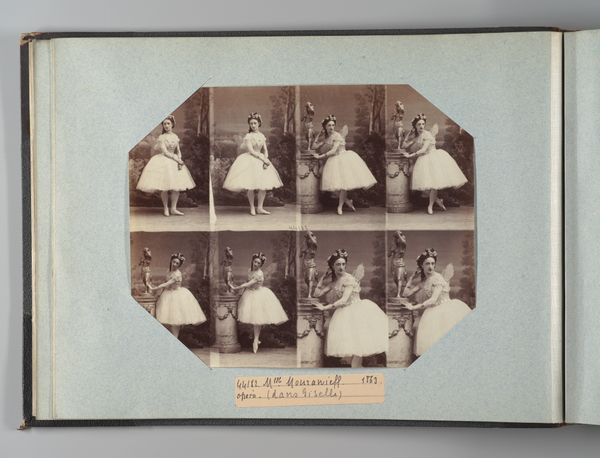
photography, albumen-print
#
portrait
#
photography
#
albumen-print
Dimensions: Image: 4 3/4 × 4 3/4 in. (12 × 12 cm) Sheet: 10 3/8 × 13 3/4 in. (26.3 × 35 cm)
Copyright: Public Domain
André-Adolphe-Eugène Disdéri made this photograph, “Mlle Rousseau,” using the wet collodion process, a popular method in the mid-19th century. The process involved coating a glass plate with light-sensitive chemicals, exposing it in a camera, and then developing the image immediately. The resulting glass negative could then be used to make multiple paper prints. Disdéri patented a way to include up to eight images on a single plate, creating the carte-de-visite, a calling card that also functioned as a portrait. This made photography much more accessible to a wider public, and therefore more lucrative. The multiple exposures seen here were achieved through a combination of careful darkroom work, and a camera with a multi-lensed objective. The wet collodion process was labor-intensive, requiring skill and precision. Yet it democratized image-making, and also centralized it: the photographer now had more control than ever before. The image itself, of a young dancer, shows a society in transition, navigating new technologies and social mores. Disdéri was an astute business man as well as an artist, showing how closely those two roles were becoming aligned.
Comments
No comments
Be the first to comment and join the conversation on the ultimate creative platform.
